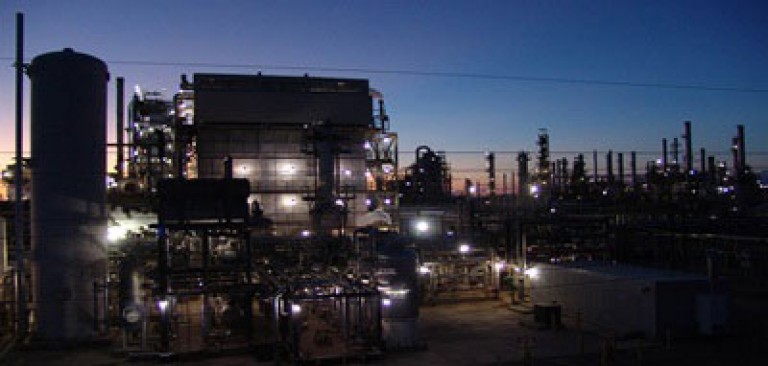Sinclair Refinery Goes 3D

By David Louis, Rawlins Daily Times
SINCLAIR — The recent completion of a 3D laser scan and modeling project of the Sinclair oil refinery is anticipated to make a tangible difference in future upgrades to the plant.
The project, conduced by Casper-based WLC Engineering, Surveying and Planning, created the first updated model since the initial design plans in the 1940s that will enable engineers to design accurate piping and structure improvements off-site for easy installation and minimal in-field changes.
The data supports precise design and installation, requires very little field engineering at delivery, reduces change orders, and provides the owner huge cost savings.
The structure has experienced many modifications and additions over more than 65 years. However, no updated as-built models have been created at any point to show the modifications and additions to the facility.
“As you know we have an old facility and some of the records from back then with all of the modifications and renovations sometimes we can’t find or can’t read and this project will help us go plant wide and know what we have and were it is,” said Ryta Sondergard, Sinclair refinery community relations director.
By having this capability, Sinclair will be able to better assess how to conduct future modifications and maintenance efforts, Sondergard added.
“It makes our record keeping much better and we’re much more intelligent if something goes down we have a 3D image of it and address exactly what the issue is,” she said.
3D Laser Scanning is a non-contact, non-destructive technology that digitally captures the shape of physical objects using a line of laser light. 3D laser scanners create data points from the surface of an object, capturing that object’s exact size and shape into the computer world as a digital 3-dimensional representation.
WLC’s scanner uses laser technology to produce incredibly detailed, photorealistic, images of the refinery’s complex environment in only a few minutes. During this project, 931 scans were performed on the 12-story facility to collect 41 billion data points.
“The complexities of this project were immense and included complying with Sinclair’s stringent safety requirements; weather and environment discrepancies on different floors of the open structure; the ability to access all areas needed to create an accurate model of the 12-story facility; and managing the 2.7 terabytes of data that the scans produced,” said Don Davis, WLC corporate president, in a release.
http://www.wyomingbusinessreport.com/sinclair-refinery-goes-3d/?refresh…






